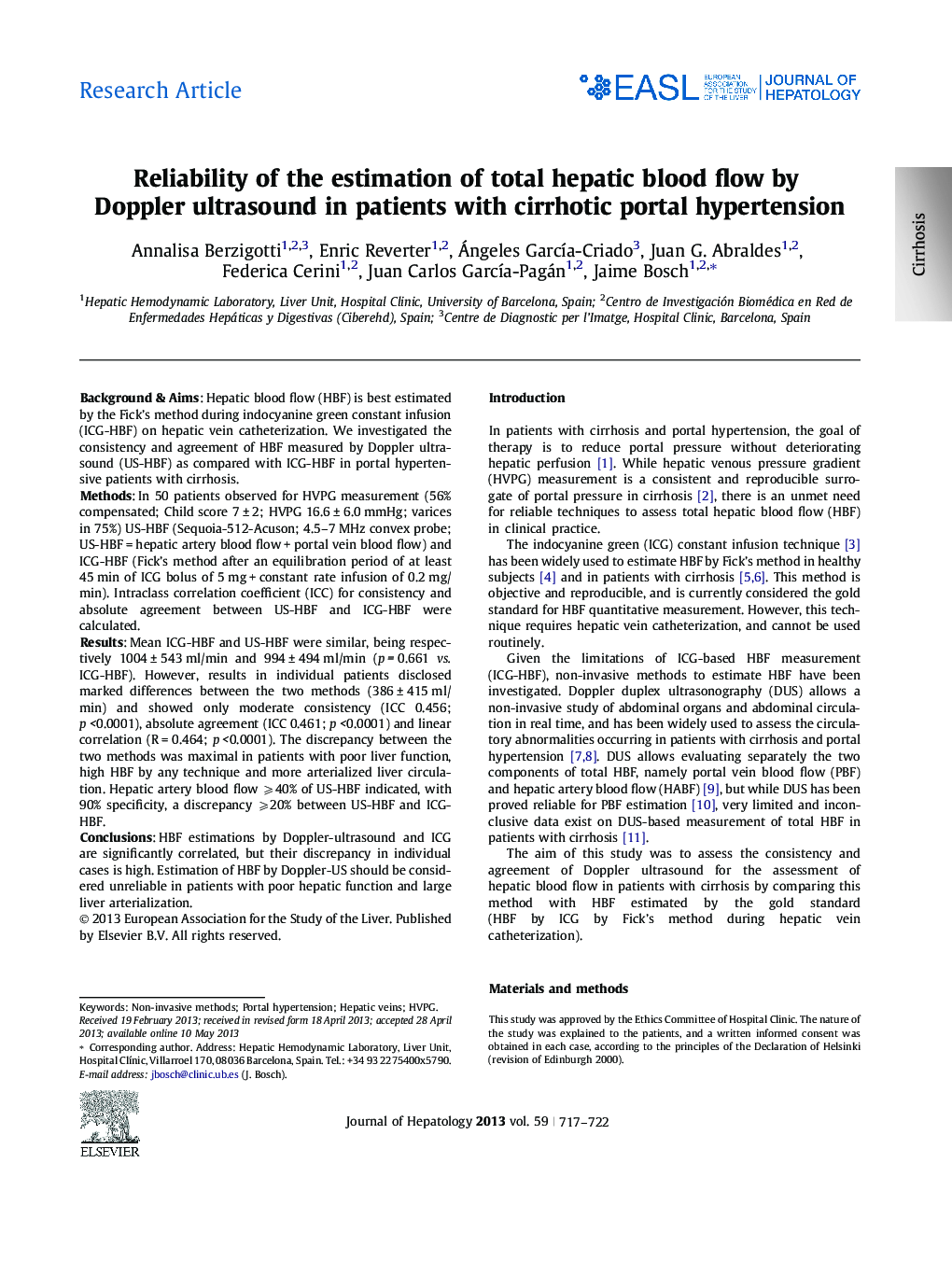| Article ID | Journal | Published Year | Pages | File Type |
|---|---|---|---|---|
| 6103776 | Journal of Hepatology | 2013 | 6 Pages |
Background & AimsHepatic blood flow (HBF) is best estimated by the Fick's method during indocyanine green constant infusion (ICG-HBF) on hepatic vein catheterization. We investigated the consistency and agreement of HBF measured by Doppler ultrasound (US-HBF) as compared with ICG-HBF in portal hypertensive patients with cirrhosis.MethodsIn 50 patients observed for HVPG measurement (56% compensated; Child score 7 ± 2; HVPG 16.6 ± 6.0 mmHg; varices in 75%) US-HBF (Sequoia-512-Acuson; 4.5-7 MHz convex probe; US-HBF = hepatic artery blood flow + portal vein blood flow) and ICG-HBF (Fick's method after an equilibration period of at least 45 min of ICG bolus of 5 mg + constant rate infusion of 0.2 mg/min). Intraclass correlation coefficient (ICC) for consistency and absolute agreement between US-HBF and ICG-HBF were calculated.ResultsMean ICG-HBF and US-HBF were similar, being respectively 1004 ± 543 ml/min and 994 ± 494 ml/min (p = 0.661 vs. ICG-HBF). However, results in individual patients disclosed marked differences between the two methods (386 ± 415 ml/min) and showed only moderate consistency (ICC 0.456; p <0.0001), absolute agreement (ICC 0.461; p <0.0001) and linear correlation (R = 0.464; p <0.0001). The discrepancy between the two methods was maximal in patients with poor liver function, high HBF by any technique and more arterialized liver circulation. Hepatic artery blood flow ⩾40% of US-HBF indicated, with 90% specificity, a discrepancy ⩾20% between US-HBF and ICG-HBF.ConclusionsHBF estimations by Doppler-ultrasound and ICG are significantly correlated, but their discrepancy in individual cases is high. Estimation of HBF by Doppler-US should be considered unreliable in patients with poor hepatic function and large liver arterialization.
